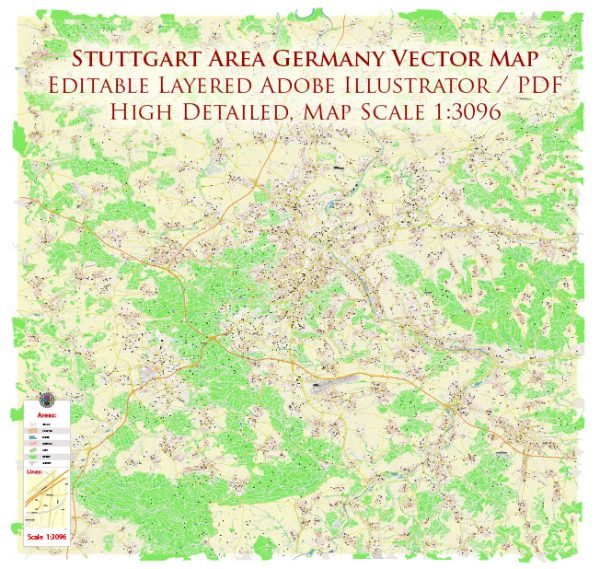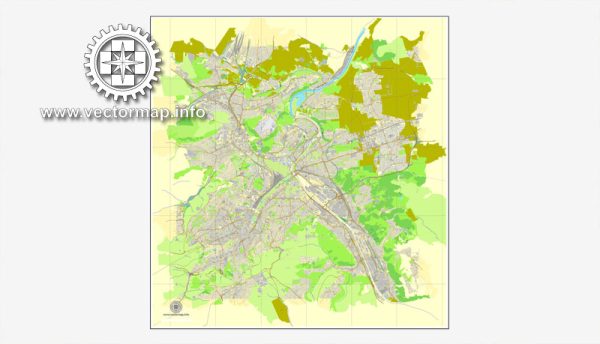Stuttgart, the capital of the German state of Baden-Württemberg, has a rich history and a well-planned urban development that combines modernity with historical heritage. The city is known for its efficient public transportation, green spaces, and a strong emphasis on sustainability. Here’s a description of Stuttgart’s urban development:
- Efficient Transportation: Stuttgart boasts an excellent public transportation system. The city is known for its well-integrated network of trams, buses, and the S-Bahn (suburban railway). This interconnected system makes it easy for residents and visitors to move around the city and its suburbs.
- Automotive Industry: Stuttgart is famous as the “Cradle of the Automobile” because it is home to the headquarters of major automotive companies like Mercedes-Benz and Porsche. The automotive industry has played a significant role in shaping the city’s development and infrastructure.
- Green Spaces: Stuttgart is surrounded by lush hills, vineyards, and forests. The city itself incorporates numerous parks and green areas. The most notable of these is the Schlossgarten, a vast park in the heart of the city that includes the New Palace and the State Museum of Natural History.
- Sustainable Development: Stuttgart is committed to sustainability and environmental protection. The city has implemented various green initiatives, such as expanding its public transportation system, promoting cycling, and supporting renewable energy sources.
- Mixed Land Use: Stuttgart’s urban development often follows the principle of mixed land use. This means that residential areas, commercial spaces, and recreational facilities are often interwoven, reducing the need for long commutes and promoting walkability.
- Historical Architecture: The city’s historical architecture is well-preserved, and you can find a mix of old and new buildings in Stuttgart. Notable landmarks include the Stiftskirche, the Altes Schloss (Old Castle), and the Wilhelma, a zoological-botanical garden with Moorish-style buildings.
- Cultural Hubs: Stuttgart is a cultural hub with numerous museums, theaters, and art galleries. The Mercedes-Benz Museum and the Porsche Museum showcase the city’s automotive history, while the Stuttgart State Gallery houses an extensive art collection.
- Economic Center: Stuttgart is a major economic center in Germany and Europe, not just in the automotive industry but also in fields like finance, technology, and engineering.
- Education and Research: The city is home to several universities and research institutions, contributing to a highly educated and innovative population.
- Modern Infrastructure: Stuttgart continues to develop its infrastructure to meet the demands of a growing population and to adapt to the changing needs of urban life. This includes ongoing projects to enhance public transportation and reduce traffic congestion.
In summary, Stuttgart’s urban development combines efficient transportation, green spaces, sustainability, a mix of historical and modern architecture, and a strong focus on culture, making it a well-rounded and dynamic city with a high quality of life.



 Author: Kirill Shrayber, Ph.D.
Author: Kirill Shrayber, Ph.D.